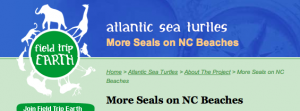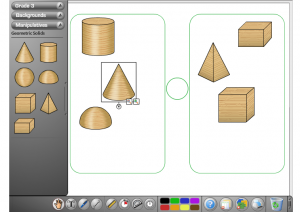The vision of digital possibilities in mathematics creates further turbidity in the mathematics waters at this time. During this era of disagreement between teachers, between parents, between teachers and parents, and with the publication of and ensuing conversations from such articles as Maclean’s “Why is it your job to teach your kid math?” (Reynolds, 2012), in British Columbia school districts are occasionally looking at and discussing technology in the elementary math classroom. Realistically, most debate time is spent on the topics of change in curriculum and pedagogy.
Theorizing about the teaching and learning of mathematics continues by researchers, educators, (Drijvers, Kieran, Mariotti, Ainley, Anderson, Chan, Dana-Picard, Guedet, Kidron, Leung, Meagher, 2010) and the public. Calls to my office from parents, teacher meetings, teacher learning sessions etc. are the work that most occupies me. There is little discussion in my world of technology in math.
I began teaching in in 1987 and was increasingly since that time the math instructional leader in my school. For the last decade I have held the district leadership position in numeracy. The late 1980’s through the 1990’s was an active time for theorizing in the teaching and learning of mathematics (Drijvers et al., 2010) Hand held calculators, logo, Plato, digital possibilities in the math class, were limited up to and through the end of the 1980’s. Calculators were part of my senior math years in the early 1970’s and in the late 1980’s and early 1990’s sporadically available in classrooms.
As the 1990’s progressed computers entered our homes and classrooms with greater frequency and students, teachers, and parents were introduced to digital math games.
 Lucky was the teacher who had a computer in his or her classroom and a good supply of floppy discs.
Lucky was the teacher who had a computer in his or her classroom and a good supply of floppy discs.
Papert in his paper, Teaching children to be mathematicians vs teaching about mathematics, (1972), declares that teaching students about mathematics is not sufficient. Indeed students understanding mathematics is not enough. It is the doing of mathematics that is important. As a teacher of math, a district learning coordinator, and a teacher of EDCP 340 Math Methods course, I can not agree more with Papert. It is the doing of math that enables students to construct understanding and to make sense of mathematical concepts. The 1980’s and 1990’s digital offerings taught students about math (perhaps), assessed to determine whether or not students understood concepts, but mostly had students practicing for speed skills which were previously learned. Yet there were those who envisioned more. Howson and Kahane, (1986), believed that schools would be under increasing pressure to “demonstrate that they were technologically aware” (p. 76). for an indirect glimpse at the kind of theories figuring in the discussions of the Study group participants.
Schools have been under increasing pressure yet the incorporation of technology into elementary math classes in our district has been slow. Document cameras and the occasional smartboard are in use. The myriad of digital numeracy activities that this cohort has been exposed to in ETEC 533 are not currently known to many in my district. When this course ends and the weekly posting, replying, and the assignments are done . . . then I suppose it will be my purpose to introduce and facilitate the use of digital math possibilities in classrooms.
Drijvers, P., Kieran, C., Mariotti, M-A., Ainley, J., Andresen, M., Chan, Y., Dana-Picard, T-D., Gueudet,G., Kidron, I., Leun, A., Meagher, M., & Leung, A. (2010). Integrating technology into mathematics education: Theoretical perspectives. In C. Hoyles & J-B LaGrange (Eds.) Mathematics Education and Technology-Rethinking the Terrain, 89-132.
Howson, A.G., & Kahane, J.-P. (1986). School Mathematics in the 1990’s New York: Cambridge University Press.
Papert, S. (1972). Teaching children to be mathematicians versus teaching about mathematics, International Journal for Mathematical Education, Science, and Technology, 3, 249–262.
Reynolds, C. (2012, March 13). Why is it your job to teach your kid math?. Macleans, 135, 28-31.




